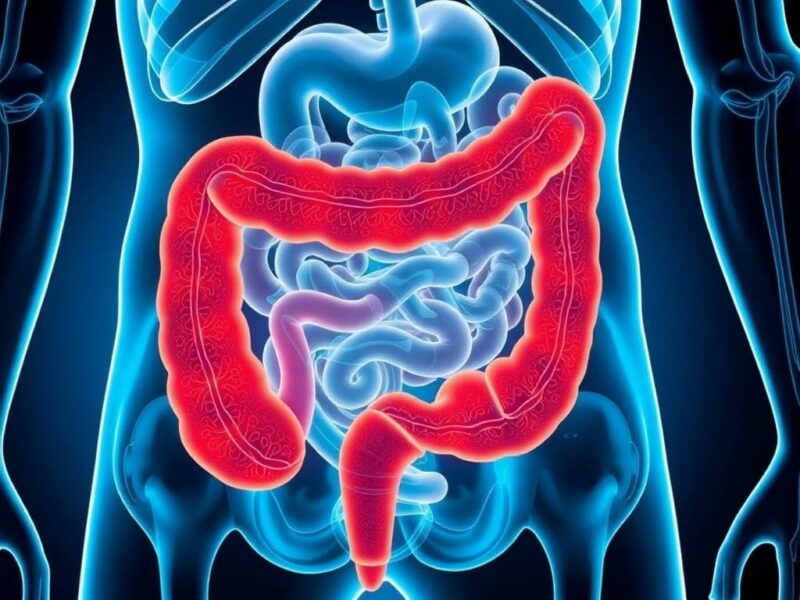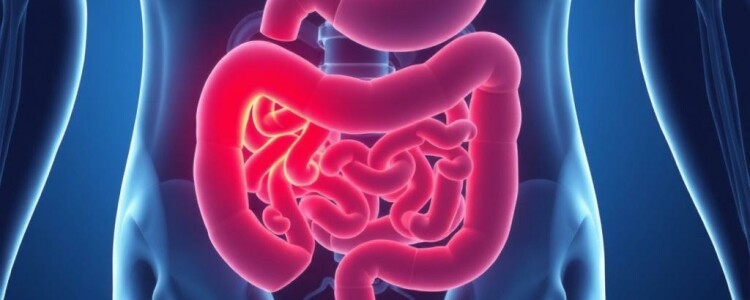Appendicitis and Inflammatory Bowel Disease (IBD) are two separate medical conditions that often raise questions due to their impact on the digestive system and some overlapping symptoms. While appendicitis is a sudden inflammation of the appendix, IBD is a chronic condition that primarily involves persistent inflammation of the gastrointestinal tract. Exploring their causes, symptoms, diagnosis, and treatment options not only helps clarify their differences but also sheds light on how these conditions may interact or influence each other. This article will take you through a comprehensive journey, unpacking all you need to know about appendicitis and IBD, helping you understand their complexities, and avoiding common misconceptions along the way.
What is Appendicitis?
Appendicitis is a medical emergency characterized by the inflammation of the appendix, a small, tube-like structure attached to the large intestine. Although small in size, the appendix can cause a big problem when blocked or infected. The reason behind appendicitis often involves the blockage of the appendix opening, which may be due to fecal material, swelling of lymphoid tissue, or infections. The blockage leads to increased pressure, reduced blood flow, and bacterial overgrowth, causing the appendix to become inflamed and painful.
The onset of appendicitis is usually sudden, punctuated by sharp pain that starts near the navel and quickly shifts to the lower right side of the abdomen. Other common symptoms include nausea, vomiting, loss of appetite, and sometimes fever. Due to the risk of the appendix rupturing and spreading infection, appendicitis often requires quick surgical removal of the appendix (appendectomy).
Signs and Symptoms of Appendicitis
Appendicitis presents several key symptoms, though they may vary between individuals:
- Sudden abdominal pain, starting around the navel and moving to the lower right abdomen
- Loss of appetite
- Nausea and vomiting
- Fever and chills
- Bloating or gas
- Constipation or diarrhea
- Inability to pass gas
These symptoms often develop rapidly, which helps distinguish appendicitis from many other digestive issues. Prompt medical evaluation is essential for proper diagnosis.
A Close Look at Inflammatory Bowel Disease (IBD)

Inflammatory Bowel Disease is a term that primarily refers to two chronic conditions: Crohn’s disease and ulcerative colitis. These conditions involve long-term inflammation of the digestive tract, often causing severe discomfort, altered bowel habits, and fatigue. Unlike appendicitis, which is acute and temporary, IBD is a lifelong challenge with periods of flare-ups and remission.
Crohn’s disease can affect any part of the digestive tract, from the mouth to the anus, and typically affects all layers of the bowel wall. Ulcerative colitis, however, is limited to the colon and rectum and involves continuous inflammation of the inner lining of the colon.
Symptoms of IBD are more variable and may develop more gradually. Common symptoms include persistent diarrhea, abdominal pain and cramping, rectal bleeding, weight loss, and fatigue. The exact cause of IBD is unknown, but it is believed to result from an inappropriate immune response to gut bacteria in genetically predisposed individuals.
Typical Symptoms of Inflammatory Bowel Disease
Here’s a brief overview of symptoms typically seen in IBD patients:
| Symptom | Details |
|---|---|
| Diarrhea | Often persistent and sometimes bloody in ulcerative colitis |
| Abdominal Pain | Cramping and discomfort, linked to inflammation and bowel spasms |
| Weight Loss | Due to malabsorption and reduced appetite |
| Fatigue | Often due to anemia or chronic inflammation |
| Fever | May indicate active inflammation or an infection |
| Rectal Bleeding | Common in ulcerative colitis due to inflamed colon lining |
How Appendicitis and IBD are Connected
Initially, appendicitis and IBD seem unrelated, but research has uncovered some interesting links, especially involving Crohn’s disease. Sometimes, early Crohn’s disease can mimic appendicitis both in symptoms and inflammation in the area around the appendix. This sometimes complicates diagnosis and treatment because doctors may not always distinguish between appendicitis and IBD flare-ups that affect the appendix region.
Moreover, surgical removal of the appendix in appendectomy has been investigated for its effect on IBD progression. Some studies suggest that people who have had an appendectomy might experience a different course of their IBD, especially ulcerative colitis. While the exact mechanics are still unclear, the immune role of the appendix might influence the immune system’s behavior in IBD patients.
Similarities and Differences
Understanding the overlap between appendicitis and IBD involves a careful comparison:
| Aspect | Appendicitis | Inflammatory Bowel Disease (IBD) |
|---|---|---|
| Onset | Sudden and acute | Chronic, with flare-ups and remissions |
| Cause | Appendix blockage and infection | Immune-mediated chronic inflammation |
| Main Symptoms | Sharp lower right abdominal pain, nausea | Diarrhea, abdominal cramps, bleeding |
| Treatment | Appendectomy (surgery) | Medications, lifestyle, sometimes surgery |
| Affected Area | Appendix | Entire GI tract (Crohn’s) or colon (Ulcerative colitis) |
Diagnosing Appendicitis and IBD
Diagnosis plays a crucial role in managing both appendicitis and IBD, particularly because their symptoms may overlap or mimic other digestive conditions. Physicians rely on a combination of patient history, physical examination, imaging, and laboratory tests.
For appendicitis, doctors often perform abdominal examinations to detect tenderness in the right lower abdomen. Blood tests may show elevated white cell counts indicating infection. Imaging like ultrasound or CT scans provides a clear picture of an inflamed appendix. Quick diagnosis is necessary since untreated appendicitis can lead to rupture and severe complications.
IBD diagnosis is more complex. It often requires colonoscopy with biopsy, blood tests for inflammation markers, stool samples, and imaging studies like MRI or CT enterography to see the extent of inflammation. The progressive and chronic nature makes ongoing monitoring necessary.
Key Diagnostic Tests
- Blood tests: Check for anemia, infection, and inflammation markers such as C-reactive protein (CRP) and erythrocyte sedimentation rate (ESR).
- Imaging: Ultrasound, CT scan for appendicitis; MRI, CT enterography for IBD.
- Endoscopy & Colonoscopy: Visual inspection and biopsy of the intestinal lining for IBD diagnosis.
- Stool tests: Detect infections or inflammation by products in stool.
Treatment Options: Managing Appendicitis vs. IBD
When it comes to treatment, appendicitis and IBD require very different approaches because of their nature. Appendicitis typically calls for urgent removal of the appendix, often through laparoscopic surgery. Antibiotics may be used alongside surgery to reduce infection risks. If treated promptly, outcomes are excellent, and the removal does not usually result in long-term digestive problems.
Treatment for IBD is more nuanced and personalized. There is no cure for IBD, so the goal is to control symptoms, reduce inflammation, prevent flare-ups, and maintain remission. Treatments include anti-inflammatory drugs, immunosuppressants, biologics targeting specific immune pathways, and sometimes surgery to remove damaged sections of the bowel. Lifestyle factors such as diet adjustments and stress management also play important roles.
Comparison Table of Treatment Approaches
| Treatment Aspect | Appendicitis | Inflammatory Bowel Disease (IBD) |
|---|---|---|
| Primary Treatment | Appendectomy (surgical removal) | Medications (anti-inflammatory, immunomodulators, biologics) |
| Emergency Care | Yes, urgent surgery needed | Rarely emergency, unless complications arise |
| Long-term Management | Typically none after recovery | Chronic disease management with periodic monitoring |
| Role of Surgery | Curative | Sometimes necessary for complications |
| Diet and Lifestyle | No specific restrictions | Essential part of disease management |
Living with Appendicitis and IBD
Living through appendicitis is usually a one-time ordeal. After surgical removal and recovery, patients return quickly to regular activities. However, living with IBD is quite different; it requires constant attention, regular medical care, and adjustments in daily life.
IBD can affect not only physical health but also emotional well-being. The unpredictability of flare-ups, chronic pain, and dietary limitations may take a toll. Many people find it helpful to lean on support groups, counseling, and education about their condition. Advances in treatments hope to improve quality of life, reducing the impact of this challenging disease.
Practical Tips for Managing IBD
- Follow a doctor-approved diet that minimizes symptoms.
- Keep a symptom diary to track triggers and flare-ups.
- Maintain regular check-ups and lab tests to monitor disease activity.
- Manage stress through mindfulness, exercise, or therapy.
- Stay informed about new treatments and research.
When Appendicitis and IBD Collide: Special Considerations
In rare cases, a person with known IBD may suffer from appendicitis, or the initial symptoms of IBD flare might mimic appendicitis. Physicians need to carefully evaluate and differentiate between these conditions because the treatment priorities differ greatly. For example, unnecessary surgery might be avoidable if the symptoms derive from an IBD flare.
Additionally, new research evaluates the role of the appendix in immune function related to IBD. While the appendix was considered a vestigial organ, it is now thought to contribute to maintaining gut flora balance and immune regulation. Understanding this role may explain why appendectomy sometimes influences the progression of ulcerative colitis. Such knowledge could open doors for novel treatment strategies targeting the appendix or its immune interactions.
Conclusion
Appendicitis and Inflammatory Bowel Disease (IBD) are complex conditions that impact the digestive tract but in very different ways. Appendicitis is an urgent, usually one-time event requiring surgical intervention, while IBD is a chronic, lifelong condition demanding careful ongoing management. Despite their differences, overlaps in symptoms and immune system involvement link the two more than previously recognized, inviting deeper scientific inquiry. If you, or anyone you know, face symptoms related to appendicitis or IBD, early medical evaluation is essential for accurate diagnosis and treatment. Advances in research and treatments continue to improve outcomes, offering hope to those affected by these challenging digestive diseases. By understanding both conditions carefully, patients and caregivers can better navigate the road to recovery and improved quality of life.



